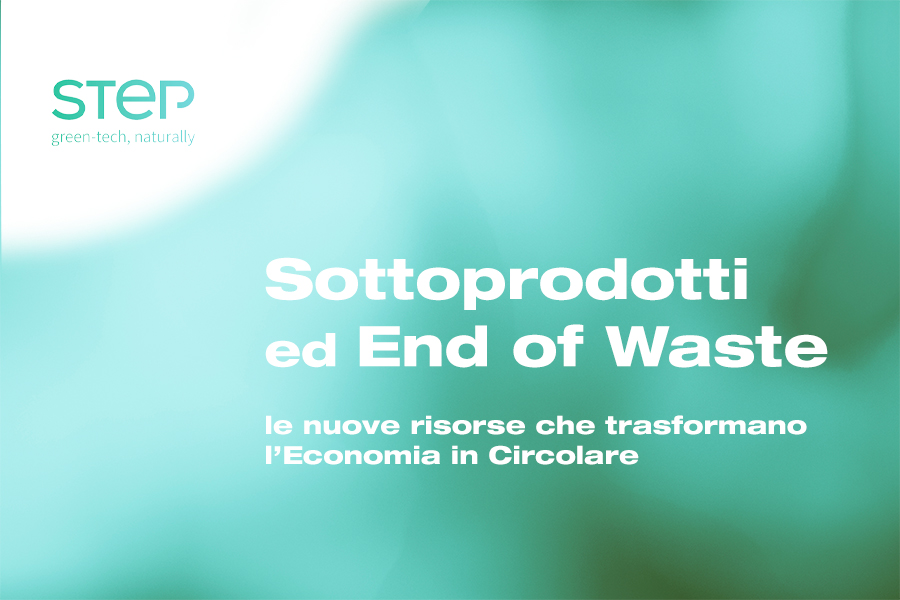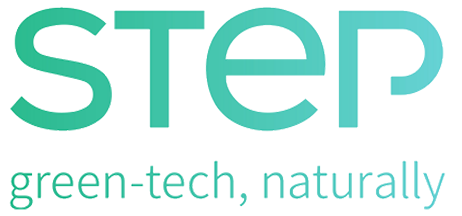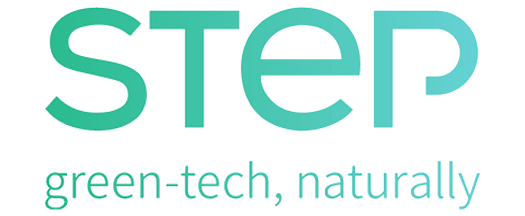
- Insight
- March 15, 2024
By-products and End of Waste: the new resources transforming the Economy to Circular
The circular approach to resource management is the key to building a sustainable and prosperous future for businesses and the planet. One of the cornerstones on which the new economic-social paradigm is based is theelimination of industrial waste, thanks toEnd of Waste and by-products: the “new” resources that will transform the economy.
To this end, the European Union has allocated tens of millions of euros to incentivize Italian companies to accelerate change, many of which are still unused.
Indeed, these issues represent both a huge business potential and a complex challenge for the industry: European regulations and directives related to waste, “sustainable materials management” and by-products are constantly evolving and sometimes difficult to interpret.
To shed light on the nomenclature and regulatory situation, contextualizing for concrete market opportunities, STEP collaborated with three expert speakers on July 27 to produce the Webinar: “Circular economy. Obligations, opportunities and concrete cases.”. Joining us were environmental lawyer Stefano Palmisano, CYRKL Italy manager Federica Savini and NEST co-founder Christian Ferrarini.
To understand what and how a “by-product” can be defined, we first took a step back with lawyer Palmisano until 2008, when the European Union in theArticle 4 of european directive 98/2008, established the “Waste Hierarchy” industries, thus establishing a priority scale for their management, with the main objective of minimizing their production.
In fact, the founding pillar as well as the first point of the hierarchical scale is prevention, from which by-products are derived: waste from production processes that can be reused in other cycles, without ever being considered “waste.”
In second place the hierarchy places the reuse of the highest possible percentage of raw material, followed then by an already budgeted process of recycling and recovery “of another kind,” such as energy. Only in the last seat is “disposal” mentioned.
Thanks to Christian, we then analyzed virtuous examples of what must be the new design paradigm underlying each product cycle, keeping prevention as the cornerstone and declining it throughout the Life Cycle Assessment.
Examples of businesses with sustainable and circular LCAs are ecodesign and modular design, which follow all the principles of circularity: modularity in design, accessibility in substitution of components that are always, or almost always, reusable, and finally recycling.
One of the benchmarks is MoBike, a Chinese bike-sharing company that has designed its bicycles in such a way that every single part is recoverable and reusable as a spare, for the entire fleet. This is a virtuous case of how a company that understands its “product as a service” can collimate the Sharing Economy with the Circular Economy.
The European Union is very dedicated to the issue and, in addition to concrete economic incentives, constantly updates the inherent legislation. Ten years after defining the Waste Hierarchy, in 2018, it gets the 1st organic package called “Circular economy” in which it rectifies and enriches the previous legislation, redefining it into “Sustainable materials management” specification needed to holistically ensure and protect human welfare and resource conservation. Within it, the term “By-product” is also defined for the first time in an official European document: that is, the production residue that becomes a resource and consequently new raw material, for example in the context of “Industrial Symbiosis.”
In the hierarchical framework mentioned above, the transition from the “Prevention” to the “Recovery” stage implies that the asset is assimilated to the status of waste, which following the criteria established by the approach named End of Waste (end of waste status), it can gain value again as “secondary raw material,” and then be reintegrated into production processes as resource. In order for the waste to be reused, it must meet and satisfy the conditions set forth in the very European directive according to the “End of Waste” process. This concept is a crucial step for the circular economy because it sanctions the recovery of waste by turning it into resources, thus reducing industry’s dependence on traditional sources of supply and all the associated costs, while greatly improving environmental impact.
During the Webinar Federica from CYRKL Italy. analyzed this process, bringing us his know-how and direct experience, first exposing the normative criteria that define it: article 6(1) of Directive 2008/98/EC (Waste Framework Directive) states that “a waste ceases to be a waste if it undergoes a recovery operation (including recycling) and complies with specific criteria to be developed in accordance with the following conditions:
the material (substance or object) is commonly used for specific purposes;
there is a market or demand for such material;
the material meets the technical requirements for the specific purposes and complies with existing regulations and standards applicable to the products;
use of the material will not lead to overall negative impacts on the environment or human health.”
With Federica we then viewed a tangible “End of waste” case study that has already been excellently initiated by her company CYRKL: the recycling of photovoltaic panels and reuse of glass, of which they are largely composed, as a secondary raw material with a view to industrial symbiosis. In fact, the panels have a layered structure with a laminated glass base and apex which, after passing the necessary quality controls, through mechanical delamination is recovered and reused by glassworks as raw material to produce jars and related products.
This demonstrates the main characteristic of Industrial Symbiosis: it is cross-cutting, in this case in fact connecting energy and food supply chains.
By-products: a change of perspective
Production waste now becomes valuable new raw materials-“by-products,” or, as defined by the European directive, “substance or object produced as an integral part of a production process (even if not intended).” For a material to qualify as a “by-product,” it must meet four basic criteria specified inArticle 5:
It is certain that the substance or object will be further used.
The substance or object can be used directly without any further processing other than normal industrial practice
The substance or object is produced as an integral part of a production process.
Thefurther use is legal, i.e., the substance or object meets, for the specific use, all relevant requirements regarding products and health and environmental protection and will not lead to overall adverse impacts on the environment or human health.
A valuable testimony on the use of a by-product was provided by Christian, citing a major Italian winery, which reuses grape berry waste as multiple by-products.
As is already well known, the first residue resulting from the pressing of grape berries is the “marc,” which is used for the production of distillates; and it is precisely from distillation that other by-products are generated: the “pips,” or seeds of the berries, and the “dealcolate marc.”
Grapeseed oil is obtained from the former, while the latter is reused to produce animal feed supplements.
Ultimately, the dealcolated pomace is dried and micronized into flour.This innovative process, called “Crush Uva,” enables the production of environmentally friendly paper from the addition of water and natural fibers to the by-product. This paper is used and made into, for example, packaging and labels for the product itself, wine.
These by-products provide savings of up to 15 percent of virgin fiber, thus becoming valuable raw material that is 100 percent recyclable. “Crash” is FSC certified, GMO free and contains 40 percent post-consumer recycled cellulose, produced from 100 percent clean energy.
Further examples of by-products in a circular key are organic ones, such as by-products from coffee processing or flour: excellent new raw materials for the production of biomass and biomethane, very important resources for the energy supply chain.
In addition to theorizing about by-products and transforming waste according to End of Waste, the circular economy incentivizes another important opportunity: industrial symbiosis. Practice that allows companies to collaborate and share resources such as by-products, creating a network of synergies that reduces waste and maximizes the value of resources.
The adoption of industrial symbiosis enables companies to take advantage of new market opportunities while significantly reducing their operating costs and improving their environmental impact, thus contributing significantly to a more sustainable future for all.
Continue to learn more on our social channels, follow our Linkedin page so you don’t miss updates on these topics.

